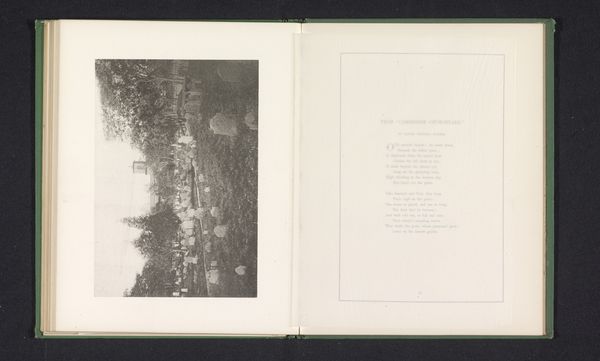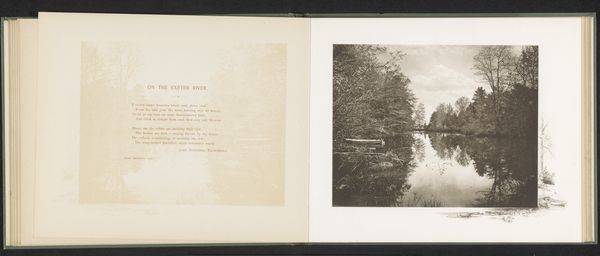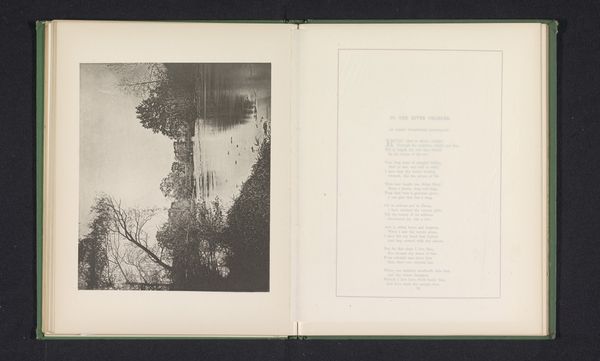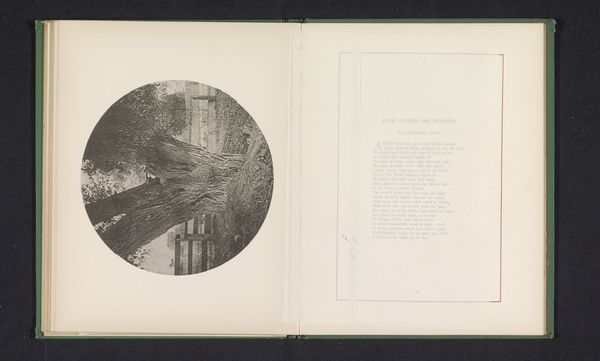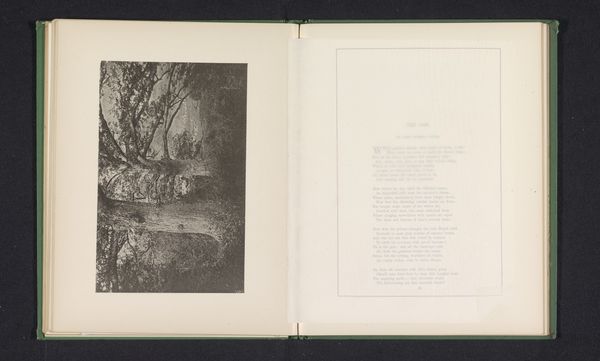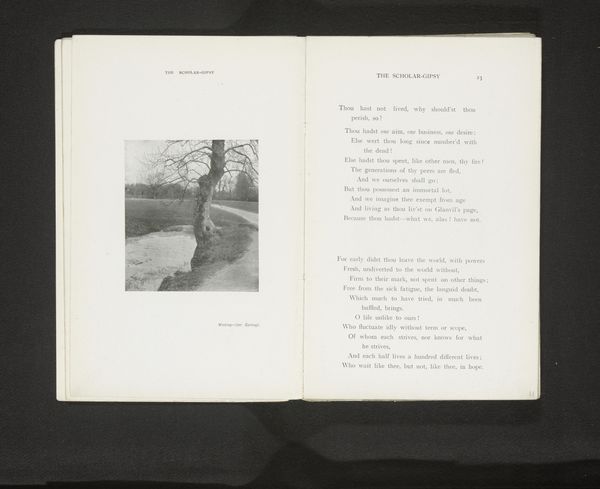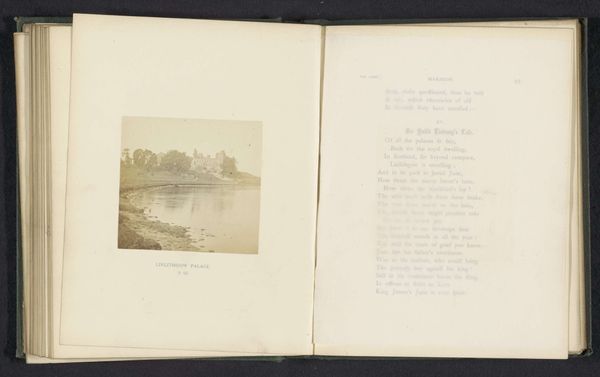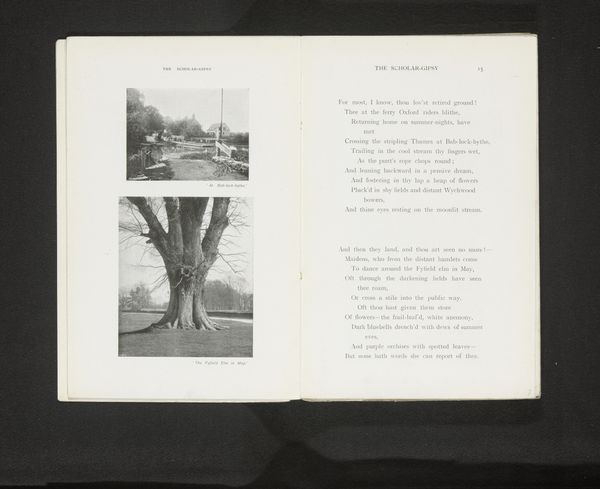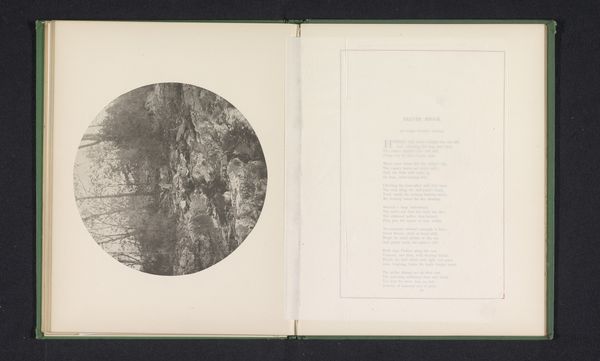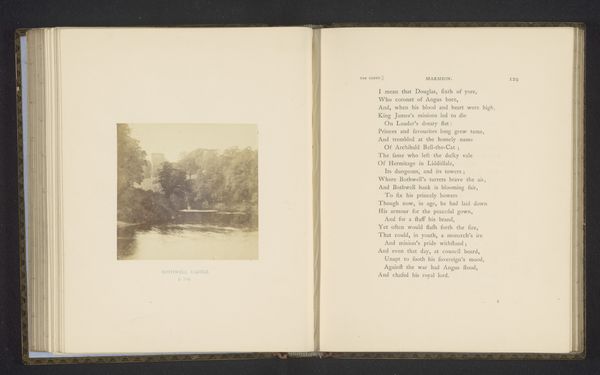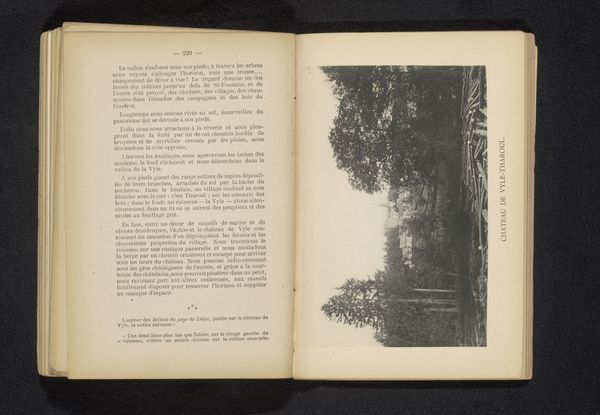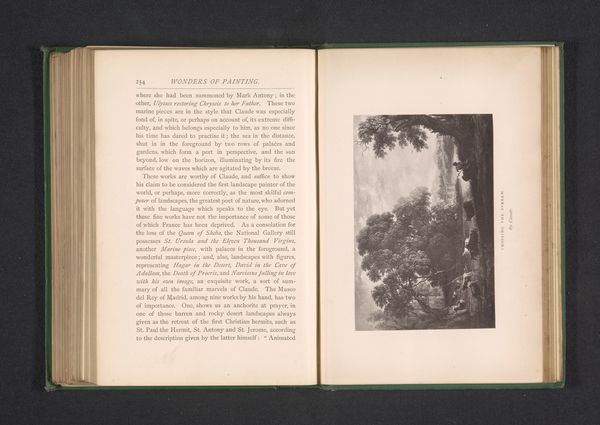
drawing, print, paper, ink
#
drawing
#
narrative-art
# print
#
landscape
#
paper
#
ink
#
academic-art
Dimensions: height 154 mm, width 151 mm
Copyright: Rijks Museum: Open Domain
Editor: So, here we have William James Stillman's "Kastanjeboom op Brattle Street te Cambridge," a drawing rendered in ink on paper from before 1876. The circular composition gives it an interesting, almost dreamlike, quality. It reminds me a bit of early photography. What catches your eye? Curator: Well, I think framing this image within its historical context is key. Think about the late 19th century—the rise of industrialization, rapid urbanization. Picturesque landscapes, like this tree, were often romanticized as a counterpoint to those changes, a longing for a simpler, more "natural" past. The placement of this tree within this circular boundary reminds me of photographs, as you mentioned, but I also wonder about the potential symbolism behind it. Editor: Symbolism? In what way? Curator: Trees often stand as symbols of life, growth, or even knowledge, right? And in this instance, it feels a little bit elegiac to me. Given the drawing’s placement in a book, possibly accompanied by text on the opposite page, how do you feel this image is trying to construct a dialogue with something more— perhaps society or history? Editor: That makes sense. Maybe the artist meant to evoke a sense of loss of these rural landscapes. That dialogue between the artwork and societal themes definitely enriches its message, especially its use as an illustration alongside the text in the book. Curator: Precisely! By examining art through this lens, we understand its place as both a reflection of and a commentary on broader cultural narratives, particularly about how nature interacts with a rapidly modernizing society. We reveal the intentional placement and its relationship with social history. Editor: I hadn't really thought about it in terms of the dialogue between the piece and social concerns, and history, but your analysis made that very clear! Curator: And I find your personal readings of composition crucial to open up an understanding that extends beyond history.
Comments
No comments
Be the first to comment and join the conversation on the ultimate creative platform.
